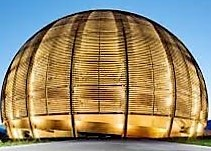Speaker
Description
Black holes have ignited thought-provoking ideas for decades because of their peculiar origin of existence and very nature. Once only thought to be merely a mathematical curiosity, black holes have now become an integral part of Astrophysics and Astronomy that devour copious amounts of matter. Given the advancement from the first speculation to the latest research, an up-to-date review report is required to sum up the development and achievements made in the field. We have designed this study to give an introductory overview of black holes and super massive black holes that will help to understand the common trait running between nuclear physics and astrophysics. In this review, we discuss the different flavours of black holes ranging from $10^{-8}$ kg to $6.6\times10^{10}$ $M_\odot$ ($M_\odot$ = $1.9891\times$$10^{30}$ kg), keeping super massive black holes as our main focus. We present a simplified method for comprehending active galaxies and categorising them based on radio-loud and radio-quiet active galactic nuclei. We also provide our readers with a mathematical approach to the physical and spin properties of black holes and, hence, a collection of the properties of 70 well-known super massive black holes and 101 active galactic nuclei respectively that will help us to understand the physics on which nuclear physics can be modelled.
